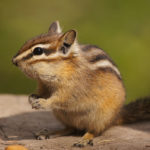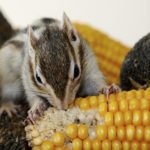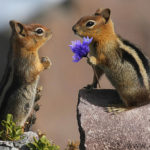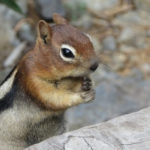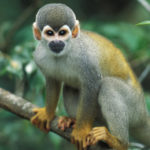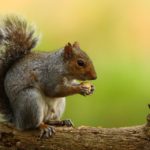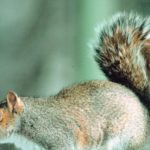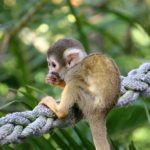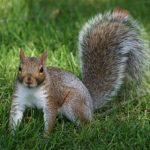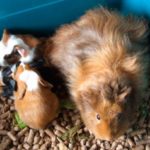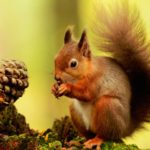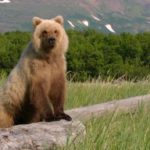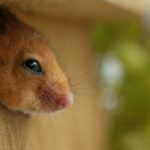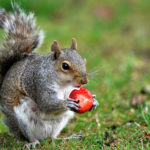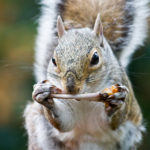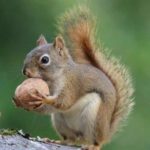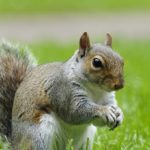Chipmunks
 Chipmunk is a small rodent of squirrel family. Its length is up to 15 centimeters, and its tail is up to 12. It weighs up to 150 grams. The name of the chipmunk occurred from a characteristic sound, called “breaker”, published before the rain. Chipmunk looks like a squirrel, only on the back has five black strips along the back. Between them are light strips.
Chipmunk is a small rodent of squirrel family. Its length is up to 15 centimeters, and its tail is up to 12. It weighs up to 150 grams. The name of the chipmunk occurred from a characteristic sound, called “breaker”, published before the rain. Chipmunk looks like a squirrel, only on the back has five black strips along the back. Between them are light strips.
Most chipmunks live in North America in deciduous forests. The Siberian chipmunk spreads from Europe to the Far East, and south to China. Animals of the taiga chipmunks climb trees well, but they have a dwelling in their burrows. The entrance to it is carefully camouflaged with leaves, branches, maybe in an old rotten stump, in a dense bush.
Nora is about 3 meters long with several dead-end compartments for pantries, toilets, living and feeding young in females. The living room is covered with dry grass. The chipmunks have big bags behind their cheeks in which they carry food supplies for the winter, and also drag the ground out while digging the hole away from it for camouflage purposes.
Each chipmunk has its own territory, and it is not customary for them to violate its borders. The exception is the spring mating of the male and female for the continuation of the genus. During this period the female summons the males with a specific signal. They run and fight.
The female mates with the winner. After that, they disperse on their territories until next spring. Animals keep a daily life. With the dawn they come out of holes, climb trees, eat, bask in the sun, play.
With the onset of darkness they hide in burrows. In the fall, I harvest up to two kilograms of food for the winter, dragging them behind my cheeks. From mid-October to April, chipmunks sleep, curled up in a ball, and the nose is hidden to the abdomen. The tail is closed with a tail. But in winter several times wake up for food and go to the toilet. In spring, on sunny days, small animals start to get out of holes, climb on a tree and bask.
When approaching danger, the animal stands on its hind legs and makes intermittent whistles. For 15 meters from a predator or human chipmunk escapes, continuing to whistle more often, removing the danger from the burrow. Usually runs and hides in a dense bush or climbs onto a tree.
By whistling you can find out whether the animal is sitting or running. There are rumors that the chipmunk is a suicidal animal. If someone ravages the hole of the animal and eats all the supplies, then he finds a bifurcated branch, pushes his head into this hornet and hangs himself. If this were so, then in the taiga it was possible to see numerous gallows of chipmunks. However, this is not observed.
With the onset of spring, the male and female mate, and in a month there are kids from 5 to 12 pieces. After mating, the female drives the male to its territory, and, in the future, brings up the cubs alone. Feeding babies lasts about two months. After that they can exist independently.
The cubs grow not in proportion. First the head grows, and then the body grows. Two weeks later the toddlers grow fur with stripes on their backs. Three weeks later, they opened their eyes. In nature, chipmunks live 2 – 3 years because of a large number of enemies.
Sometimes chipmunks accept animal food: larvae, worms, insects. If a person planted vegetables near the animal’s home, the chipmunk would gladly take cucumber, carrots, tomatoes. On the grain field, bite the stem of cereal, from the fallen spikelet in seconds grabs all the grain in the cheek pouches, and runs away.
Stock animals make in the hole, laying out different species in separate rooms. These bins are needed for spring, when food is scarce. When the sun starts to warm well, the chipmunk pulls out the rest of the stocks for drying.
